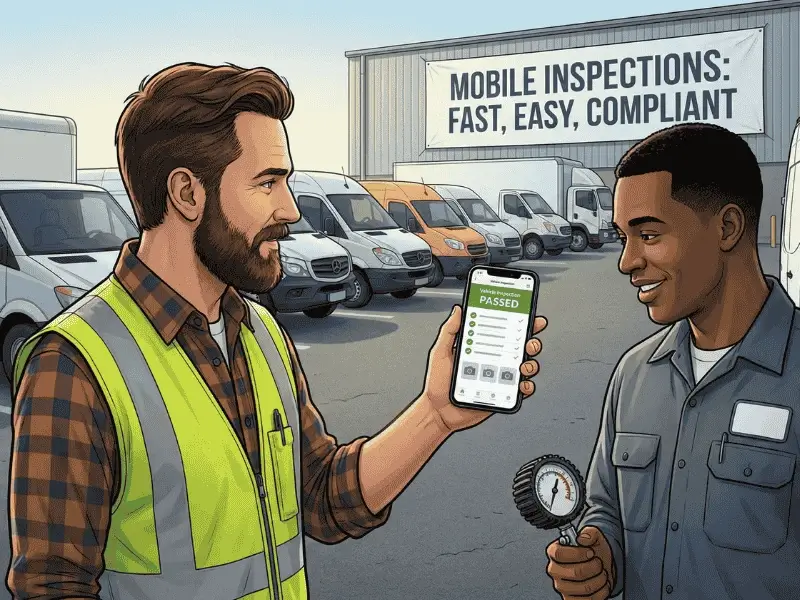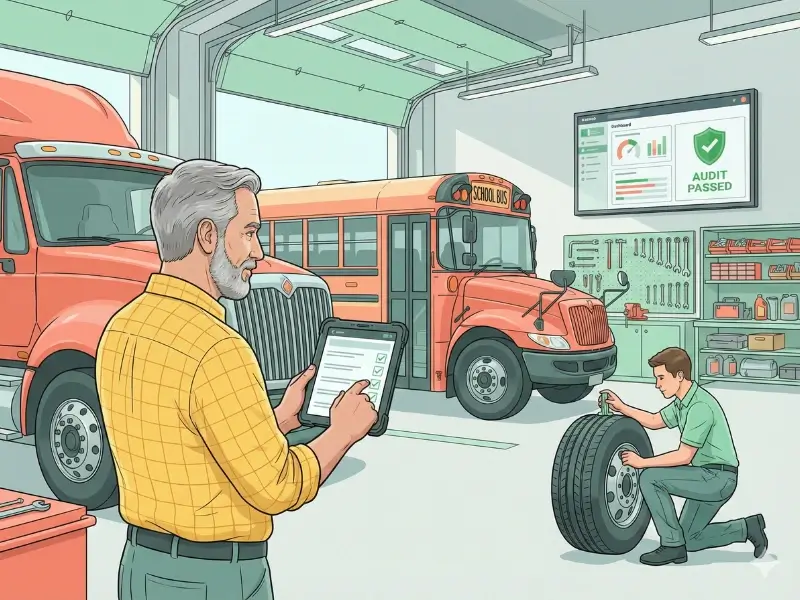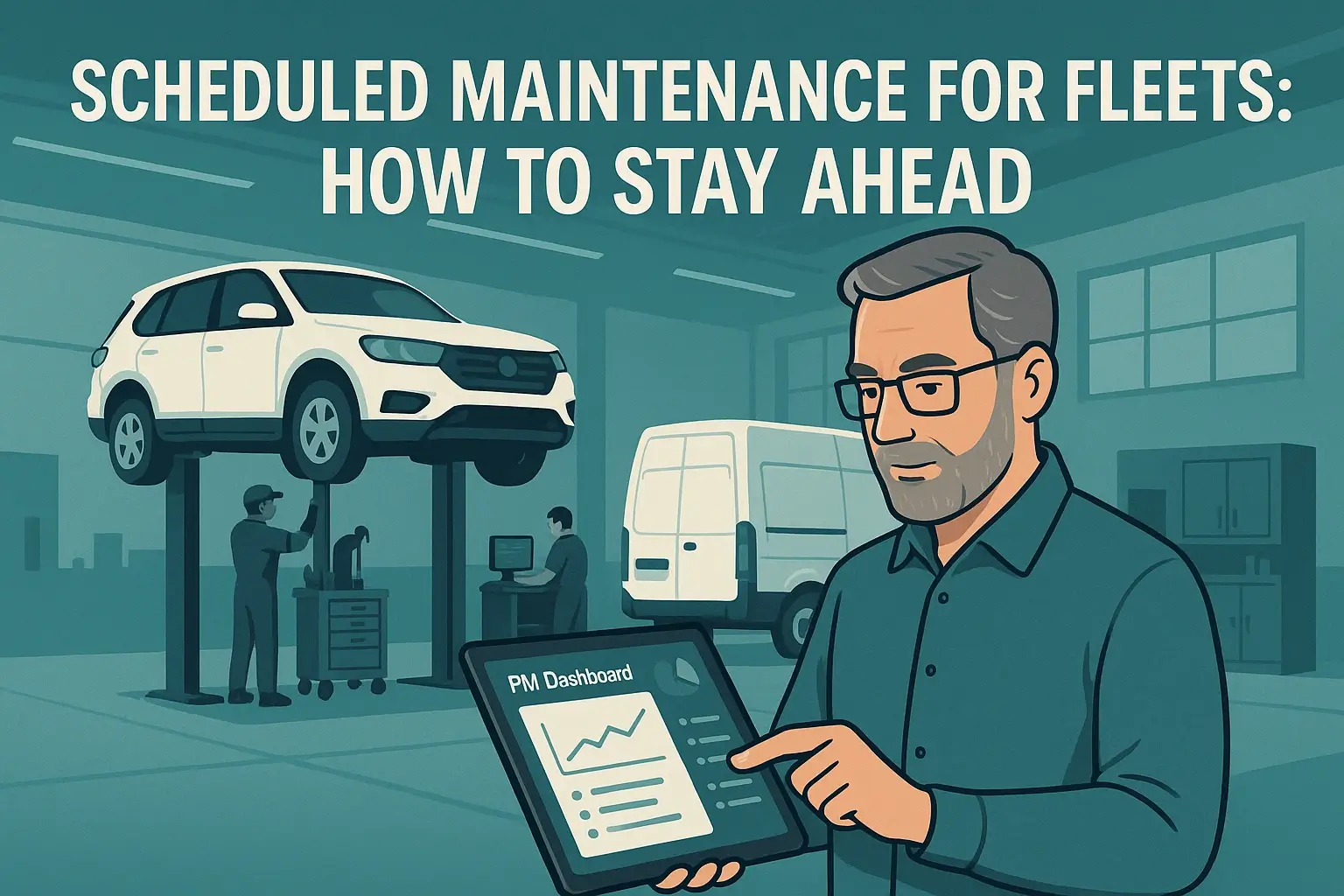Key Takeaways
Understanding Vehicle Inspection Forms
Vehicle inspection forms serve as a systematic checklist for evaluating the condition of vehicles. They help identify potential issues, defects, or maintenance requirements, ensuring that vehicles are safe for operation. By conducting regular inspections using these forms, organizations can avoid breakdowns, accidents, and costly repairs. A digital vehicle inspection app simplifies this process by providing real-time data and easy access to inspection records.
When it comes to vehicle safety, there is no room for compromise. Vehicle inspection forms play a vital role in ensuring that vehicles meet the necessary safety and operational standards. These forms are not just a regulatory requirement; they are a crucial part of any comprehensive vehicle maintenance program.
Organizations understand the importance of vehicle inspection forms in maintaining a fleet of vehicles that comply with safety regulations. These forms help organizations proactively identify and address maintenance issues, reducing the risk of accidents and downtime. Using a vehicle inspection report app allows businesses to document inspections efficiently and generate detailed reports. By regularly conducting inspections and using the information gathered from these forms, organizations can stay ahead of potential problems and ensure the safety of their drivers and the public.
Importance of Vehicle Inspection Forms
Vehicle inspection forms are a significant part of any fleet maintenance program. They go beyond mere regulatory requirements, acting as a crucial foundation for proactive vehicle care. These forms ensure your fleet adheres to safety and operational standards mandated by regulatory bodies like DOT but their benefits extend far beyond legal obligations.
Let's discuss the power of vehicle inspection forms:
Proactive Maintenance:
Regular inspections using standardized forms empower you to identify and address potential maintenance issues before they snowball into costly repairs or breakdowns. This proactive approach significantly reduces the risk of accidents and minimizes vehicle downtime, keeping your fleet operational and efficient.
Reduced Downtime and Costs:
Imagine a scenario without inspection forms. Vehicles would operate unchecked, increasing the likelihood of unexpected breakdowns, accidents, and hefty repair bills. Inspection forms establish a systematic approach to vehicle safety and maintenance, promoting long-term fleet health and reducing overall operational expenses.
Improved Safety:
Standardized inspection protocols ensure a thorough examination of critical vehicle components, from brakes and tires to lights and fluid levels. Using a vehicle inspection report app or a digital vehicle inspection app helps document findings accurately and maintain compliance. By identifying and addressing potential safety hazards early on, you significantly reduce the risk of accidents and protect both drivers and those on the road.
Detailed Documentation:
Vehicle inspection forms provide a comprehensive record of each vehicle's condition over time. This documented inspection history serves as valuable evidence in case of accidents or legal disputes, demonstrating your commitment to vehicle safety and regulatory compliance.
Informed Maintenance Decisions:
The documented history within vehicle inspection forms allows you to track maintenance trends and identify recurring issues across your fleet. This empowers you to make data-driven decisions regarding repairs, replacements, and preventive maintenance strategies, optimizing your fleet's overall performance and lifespan.
Key Components of Vehicle Inspection Forms
A well-designed vehicle inspection form should cover all essential elements of a vehicle, including its exterior, interior, engine, electrical components, and safety equipment. Using a vehicle inspection report app or a digital vehicle inspection app allows organizations to document these details efficiently and make informed maintenance decisions.
The exterior component of a vehicle inspection form includes checks for any visible damage, such as dents, scratches, or broken lights. It also includes an assessment of the vehicle's tires, ensuring that they have sufficient tread depth and are properly inflated. By examining the exterior, organizations can identify any potential safety hazards and take appropriate action. A car inspection app can simplify this process by providing digital checklists and photo documentation.
The exterior component of a vehicle inspection form includes checks for any visible damage, such as dents, scratches, or broken lights. It also includes an assessment of the vehicle's tires, ensuring that they have sufficient tread depth and are properly inflated. By examining the exterior, organizations can identify any potential safety hazards and take appropriate action.
The engine component of a vehicle inspection form involves a thorough examination of the vehicle's engine and its related components. This includes checking the oil level, coolant level, and battery condition. It also involves inspecting the belts, hoses, and filters for any signs of wear or damage. By assessing the engine, organizations can identify any potential mechanical issues and address them before they escalate into major problems.
The electrical components component of a vehicle inspection form focuses on the vehicle's electrical system, including the lights, signals, and gauges. It involves checking the functionality of these components and ensuring that they are properly connected and operational. By assessing the electrical components, organizations can ensure that the vehicle's lighting and signaling systems are functioning correctly, enhancing safety on the road.
The safety equipment component of a vehicle inspection form includes checks for the presence and functionality of essential safety features, such as airbags, fire extinguishers, and first aid kits. It also involves inspecting the vehicle's brakes, steering, and suspension systems. By assessing the safety equipment, organizations can ensure that their vehicles are equipped with the necessary tools to handle emergencies and protect the driver and passengers.
In conclusion, vehicle inspection forms are a critical tool in maintaining the safety and operational efficiency of vehicles. By utilizing these forms, organizations can proactively identify and address maintenance issues, reducing the risk of accidents and downtime. With comprehensive vehicle inspection forms that cover all essential components, organizations can ensure that their fleet is in compliance with safety regulations and ready for the road.
Download your FREE PM Checklist before it's gone!
Deep Dive into Vehicle Inspection Report Apps
Vehicle inspection apps have transformed the vehicle inspection process by digitizing the entire workflow. These apps offer a range of features and benefits that streamline the inspection process, making it faster, more accurate, and less cumbersome.
With the advent of inspection apps, the days of carrying around stacks of paperwork and manually filling out forms are long gone. Inspectors can now simply whip out their mobile devices, open the app, and start conducting inspections with ease. This not only saves time but also eliminates the risk of human error that often comes with manual data entry.
One of the key benefits of using inspection apps is the elimination of manual paperwork. Inspectors no longer have to spend hours transcribing their findings onto paper forms, only to have to transfer that information into a computer later. With digital vehicle inspection apps, inspectors can perform inspections, take photos, and record notes directly on their mobile devices. The data is instantly synchronized and stored in a central database, improving accessibility and enabling real-time reporting.
Imagine a scenario where an inspector discovers a critical issue during an inspection. With a traditional paper-based system, the inspector would have to rush back to the office to report the issue, causing delays and potentially putting lives at risk. However, with an inspection app, the inspector can immediately capture photos of the issue, record detailed notes, and send all the information to the relevant stakeholders in real-time. This allows for faster response times and ensures that necessary actions are taken promptly, minimizing risks and improving fleet safety.
Benefits of Using Vehicle Inspection Report App
Inspection apps not only eliminate the need for manual paperwork, but they also increase efficiency and reduce human error. By automating the inspection process, these apps allow inspectors to focus more on the actual inspection rather than getting bogged down by administrative tasks.
These innovative apps offer a multitude of advantages over traditional methods, including:
- Enhanced Efficiency: Mobile apps empower drivers to conduct inspections on the go, eliminating the need for bulky binders and paperwork.
- Improved Accuracy: Digital inspection forms with predefined checklists minimize the risk of errors or omissions compared to handwritten notes. Additionally, drop-down menus and radio button options ensure consistent data entry.
- Streamlined Reporting: Gone are the days of manually compiling inspection reports. Digital apps automatically generate detailed reports with photos, timestamps, and inspection notes. This allows for easy data analysis, trend identification, and improved communication within your team.
- Offline Functionality: Many inspection apps work offline, allowing drivers to conduct inspections even in areas with limited internet connectivity. Once back online, the app seamlessly synchronizes the data, ensuring all information is captured.
- Simplified Compliance: Digital inspection apps can be customized to include industry-specific regulations and safety standards. Automated reminders for required inspections ensure your fleet remains compliant, reducing the risk of violations and fines.
- Data-Driven Maintenance: Inspection data provides valuable insights into vehicle health. Identify potential issues early and schedule preventive maintenance proactively, minimizing downtime and maximizing fleet efficiency.
Furthermore, an inspection app enhances collaboration among team members by enabling them to share information and coordinate tasks seamlessly. In the past, inspectors would have to physically hand over paperwork or rely on phone calls and emails to communicate their findings.
With a digital vehicle inspection app, all the information is stored in a centralized database, accessible to authorized team members. This promotes better communication, reduces miscommunication, and ensures that everyone is on the same page.
Features to Look for in a Vehicle Inspection App
Not all inspection apps are created equal. When choosing an inspection app, it's important to consider features that can greatly enhance the effectiveness and usability of the app.
Customizable checklists are a must-have feature in a vehicle inspection app. Every organization has its own unique requirements and inspection criteria. Being able to tailor the daily vehicle checklist for drivers to specific needs ensures that the app is aligned with the organization's standards and processes.
Photo and video integration is another crucial feature to look for. Visual documentation is often essential in vehicle inspections, as it provides clear evidence of any issues or damages. An inspection app that allows inspectors to capture photos and videos directly within the app not only saves time but also ensures that all the necessary evidence is properly documented.
Offline functionality is also worth considering. Inspections often take place in remote areas or locations with poor network coverage. An inspection app that allows offline data collection ensures that inspections can still be conducted even without an internet connection. The app should be able to sync the data once a connection is available.
Data analytics is a powerful feature that can provide valuable insights into the inspection process. An inspection app that offers data analytics capabilities allows organizations to analyze trends, identify recurring issues, and make data-driven decisions to improve their operations.
Integration with other systems is yet another feature to consider. An inspection app that can seamlessly integrate with other systems, such as fleet management software or maintenance tracking systems, can further streamline the overall workflow and ensure that all relevant data is consolidated in one place.
When choosing a vehicle inspection app, it's important to carefully evaluate the features and benefits it offers. By selecting the right app, organizations can optimize their inspection processes, improve efficiency, and ensure compliance with industry standards.
Transitioning from Paper to Digital: A Step-by-Step Guide
Making the switch from paper to a digital inspection app may seem daunting, but with proper planning and implementation, it can be a smooth and rewarding process.
Preparing Your Team for the Transition
Before introducing the inspection app, it is essential to familiarize your team with its benefits and functionality. Conduct training sessions to ensure that all inspectors understand how to use the app effectively. Address any concerns or challenges they may have and provide ongoing support during the transition period.
Implementing the Inspection App in Daily Operations
Start by setting up the app according to your organization's specific requirements. Customize the vehicle inspection form, checklists, inspection parameters, and reporting formats to align with your processes. Integrate the app with other relevant systems, such as maintenance or fleet management software, to ensure smooth data flow.
A vehicle inspection report app allows for better organization and record-keeping. Roll out the app gradually, allowing for feedback and making necessary adjustments along the way to improve efficiency and accuracy.
Maintaining Compliance with Vehicle Inspection Apps
Ensuring compliance remains a top priority when using vehicle inspection apps. Although the shift to digital inspections brings significant benefits, it is essential to understand and meet the compliance requirements set by regulatory bodies.
Understanding Compliance Requirements
Research the specific regulations and standards that apply to your industry and location. Familiarize yourself with the required frequency of inspections, documentation, and reporting. Ensure that the inspection app you choose can generate compliance reports and securely store inspection data for the required duration.
How Inspection Apps Ensure Compliance
Inspection apps simplify compliance by automating data capture and report generation. They provide comprehensive inspection checklists, ensuring that no critical item is overlooked. The app can also prompt inspectors to take corrective actions in case of identified issues, ensuring compliance with maintenance and safety requirements.
Optimizing Your Vehicle Inspection Process
Moving to a digital inspection app opens up opportunities to optimize your overall vehicle inspection process for greater efficiency and effectiveness.
Best Practices for Using Inspection Apps
Regularly review and update your vehicle inspection form based on feedback from inspectors and changes in regulations. Use data analytics within the vehicle inspection report app to identify trends, recurring issues, and areas for improvement.
Encourage open communication and collaboration among your inspection team to maintain accuracy and ensure a continuous improvement mindset.
Streamlining Your Inspection Process with Digital Solutions
Consider integrating your inspection app with other digital solutions like maintenance management systems, GPS tracking, or telematics platforms. This integration allows for seamless data flow, enhances visibility, and enables proactive maintenance and repair scheduling.
Related Posts:
- The Ultimate Guide to Vehicle Fleet Management in 2025: Tools, Tips, and Best Practices
- Reactive vs. Preventive Maintenance: Which Strategy Saves You Time and Money?
- 10 Signs That Your Vehicle Needs Alignment
- Is My Fleet Too Small for Maintenance Software?
Stay Ahead with a Monthly Vehicle Inspection Checklist!
Ensure your fleet remains safe and compliant with a well-structured Monthly Vehicle Inspection Checklist. Regular inspections help detect issues early, reduce downtime, and prevent costly repairs.
In conclusion, l and inspection apps are indispensable tools for ensuring the safety, compliance, and reliability of vehicles in various industries. By understanding the importance of these forms, exploring the features and benefits of inspection apps, transitioning from paper to digital, maintaining compliance, and optimizing the inspection process, organizations can streamline their operations, reduce costs, and enhance safety standards. Embrace the digital revolution in vehicle inspections and unlock the full potential of your fleet management practices. Take control of your fleet inspections today! Sign up for Simply Fleet and simplify your vehicle maintenance and inspection process. Get started now!



.png)








.png)


.png)





.webp)



